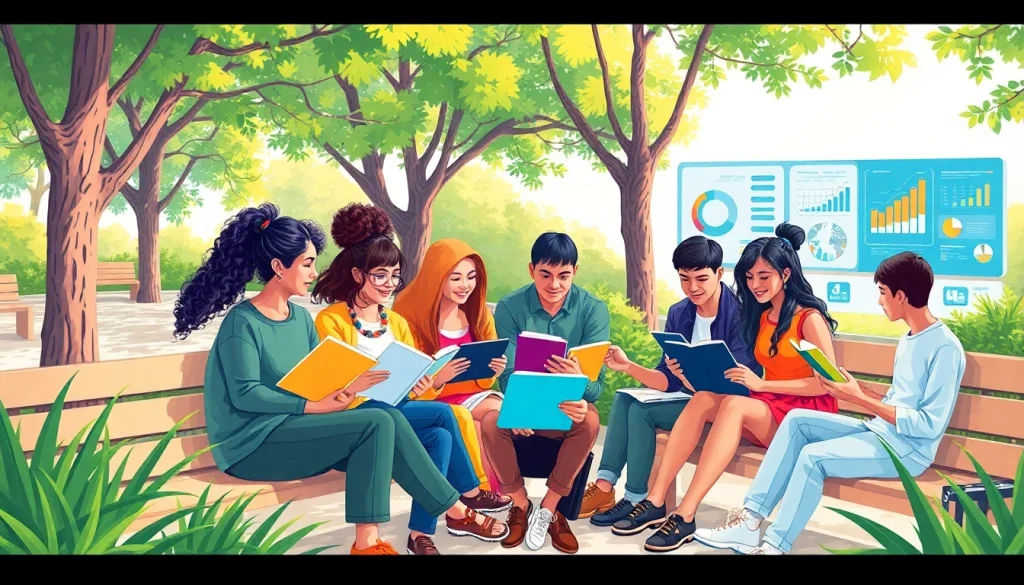
Understanding Educational Resources
In an increasingly interconnected and rapidly evolving world, the demand for effective and accessible educational resources has never been greater. As students and educators alike seek innovative methods to enhance learning experiences, the role of educational resources becomes pivotal in shaping the future of education. This article delves deep into what educational resources are, their types, their significance in the learning process, and the future advancements we can anticipate in this essential field.
What are Educational Resources?
Educational resources encompass a wide array of materials, tools, and content designed to facilitate learning. They range from traditional books and textbooks to modern digital tools and platforms that offer interactive learning experiences. These resources can be utilized in various educational contexts, including formal education settings like schools and universities, as well as informal learning environments such as online platforms and community programs.
Types of Educational Resources
Educational resources can be classified into several categories based on their format and purpose:
- Textual Resources: These include textbooks, articles, e-books, and printed handouts. They form the core of conventional education and provide foundational knowledge in various subjects.
- Digital Resources: Online platforms, e-learning courses, and webinars fall under this category. Digital resources enable flexible learning and cater to diverse learning styles.
- Multimedia Resources: Videos, podcasts, and interactive simulations represent multimedia educational resources. They engage learners through various sensory modalities and can enhance understanding of complex concepts.
- Open Educational Resources (OER): These are freely available materials that can be used, modified, and shared by anyone. OER promotes collaboration and accessibility, allowing educators and students to contribute to and benefit from a collective knowledge pool.
Importance of Educational Resources in Learning
The significance of educational resources cannot be overstated. They play a crucial role in:
- Enhancing Understanding: Resources provide multiple perspectives, helping learners grasp concepts through various approaches.
- Promoting Engagement: Interactive resources foster engagement, allowing students to actively participate in the learning process.
- Facilitating Collaboration: Educational resources enable collaboration among students and educators, enhancing communal learning experiences.
- Supporting Differentiated Learning: A diverse array of resources caters to varying learning styles, ensuring all students have access to the tools they need to succeed.
Finding Quality Educational Resources
Where to Look for Free Resources
Finding quality educational resources is vital for both educators and learners. Numerous platforms offer free resources across various subjects and formats, including:
- Government and Educational Institutions: Websites of universities and educational organizations often provide free resources, including lecture notes and course materials.
- Open Educational Resource Platforms: Sites like OER Commons and OpenStax host collections of freely available teaching materials.
- Libraries: Many libraries have online databases where patrons can access educational documents, e-books, and learning modules.
- Online Learning Platforms: Websites such as Coursera, edX, and Khan Academy offer free courses and resources aimed at a wide range of learners.
Evaluating the Credibility of Sources
Not all resources are created equal, making it essential to evaluate their credibility. Here are strategies to ensure the sources are reliable:
- Check Author Credentials: Verify the qualifications of the author or organization behind the resource.
- Look for Peer Review: Resources that have undergone peer review are generally more reliable and credible.
- Assess Publication Date: Ensure that the information is current and relevant to today’s context.
- Examine Citations: Resources that cite reputable studies and sources provide a more robust foundation for the information provided.
Utilizing Educational Resource Platforms
There are many platforms dedicated to providing educational resources, both paid and free. Here are some noteworthy platforms:
- OER Commons: A digital library offering a wide selection of open educational resources, searchable by subject and education level.
- edX: Provides access to university-level courses in a variety of subjects, free to complete with the option to pay for certification.
- Coursera: Offers courses from various universities, many of which can be audited for free.
- Teachers Pay Teachers: A marketplace where educators can share, buy, and sell original teaching resources.
Integrating Educational Resources into Learning
Strategies for Effective Use
To maximize the benefits of educational resources, consider the following strategies:
- Start with Clear Learning Objectives: Establish what you or your students aim to achieve through the use of resources.
- Diversify Resources: Use a mix of different types of resources (textual, multimedia, etc.) to appeal to different learning styles.
- Encourage Collaboration: Promote group activities that utilize educational resources, fostering a collaborative learning environment.
- Provide Context: Ensure that resources are framed within a relevant context that resonates with the learners’ experiences and knowledge base.
Creating a Structured Learning Plan
A structured learning plan helps in the effective integration of resources. Here’s how to create one:
- Assess Learner Needs: Identify the needs and preferences of your learners to tailor the plan accordingly.
- Outline Learning Goals: Clearly define what you aim to achieve through the integration of resources, whether it’s knowledge acquisition, skill development, or critical thinking.
- Select Appropriate Resources: Choose resources that align with the learning goals and the learners’ needs.
- Implement and Monitor: Execute the plan while continuously monitoring progress and making necessary adjustments as needed.
Engaging Learners Through Interactive Materials
Interactive materials significantly enhance learner engagement. Some effective forms of interactive resources include:
- Gamification: Incorporating game elements into learning activities motivates learners and enhances retention.
- Simulations: Utilizing simulations for subjects like science and economics allows students to experiment in a controlled environment.
- Interactive Videos: Videos that include quizzes or decision points encourage active participation and deeper learning.
- Discussion Forums: Utilizing online forums for discussion fosters a sense of community and keeps learners engaged.
Challenges in Accessing Educational Resources
Barriers to Access in Different Regions
Access to educational resources isn’t uniform globally, and several barriers exist, including:
- Technological Limitations: In regions with poor internet connectivity or lack of technological infrastructure, accessing online resources can be challenging.
- Economic Factors: Limited funding for educational institutions can hinder access to necessary resources.
- Cultural Barriers: In some areas, cultural norms may prevent certain groups from accessing educational materials equally.
Overcoming Resistance to New Learning Tools
Change can be met with resistance, particularly concerning new educational tools. Strategies to overcome this resistance include:
- Professional Development: Providing training on how to effectively use new resources can boost confidence and adoption rates among educators.
- Highlighting Success Stories: Sharing examples of successful implementation fosters trust and excitement about prospective benefits.
- Gradual Integration: Starting with a small implementation can make the transition smoother and less intimidating for educators.
Technological Requirements for Remote Access
With the rise of online learning, technological requirements for remote access to educational resources include:
- Internet Connectivity: Reliable and high-speed internet access is essential for accessing and utilizing online resources effectively.
- Device Availability: Access to computers, tablets, or smartphones is necessary to engage with digital learning materials.
- Software Compatibility: Ensuring that devices can effectively run educational applications and platforms is critical to usability and accessibility.
The Future of Educational Resources
Emerging Trends in Digital Learning
The landscape of educational resources is evolving, with several emerging trends shaping the future of digital learning:
- Personalized Learning: Adaptive learning technologies tailor resources to individual learners’ needs, fostering a more personalized education experience.
- Blended Learning: Combining online and face-to-face education promotes flexibility and can enhance learning outcomes.
- Increased Focus on Soft Skills: Many resources are increasingly emphasizing the development of soft skills such as collaboration, communication, and problem-solving.
The Role of AI in Educational Resources
Artificial Intelligence (AI) is playing a transformative role in educational resources, resulting in:
- Intelligent Tutoring Systems: AI-powered systems can provide personalized tutoring based on individual student performance.
- Content Creation: AI can assist in generating educational content, such as quizzes and videos, making resource creation more efficient.
- Data Analytics: AI facilitates the analysis of learner data, helping educators identify strengths and areas for improvement more efficiently.
Building Inclusive Educational Platforms
As educational resources expand, inclusivity must remain a priority. Strategies for building inclusive platforms include:
- Accessibility Features: Ensuring that resources are available in formats accessible to all learners, including those with disabilities.
- Culturally Responsive Materials: Developing resources that reflect a diverse array of cultures and perspectives can engage a wider audience.
- Community Involvement: Involving community stakeholders in the development of educational resources promotes relevance and inclusivity.






